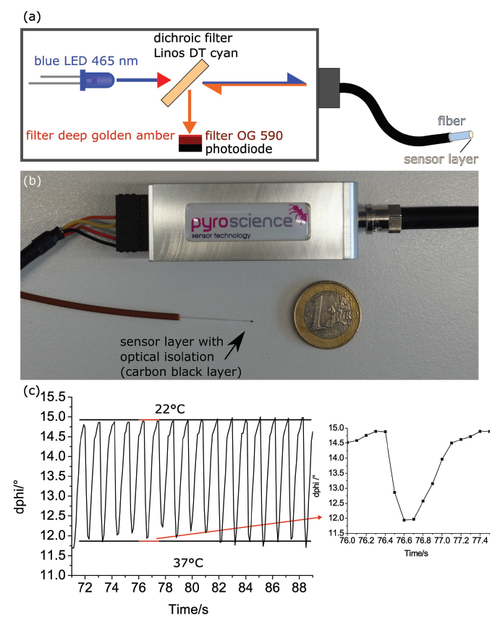Figure 6.1. a) Schematic representation of the optical set-up of Firesting-mini phase fluorometer from Pyro Science. b) Photographic image of the phase fluorometer with the connected fiber-optic temperature sensor. c) Response of the sensor to temperature changes obtained by repeatable sensor transfer between two water-filled beakers (T = 22 and 37 °C, respectively).

